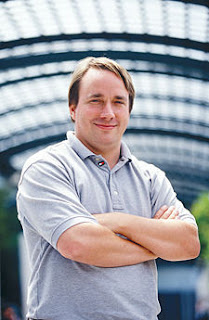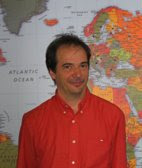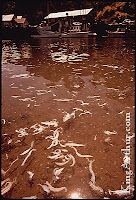 |  |  |
 |  |  |
Hi,

'Baa-d' news for all you meat eaters! I have a cutting of the Weekend Today dated 24th Nov with me now. I would like to share what I have gleaned from the article entitled "Eating Green" (as well as some of my own thoughts on the issue). It was authored by Carol Leong.
In this article she states Al Gore met up with President-elect Barack Obama to "begin an emergency rescue of human civilisation". Chinese Premier Wen Jiabao reminded rich nations of their responsibility to ditch their "unsustainable way of life".
The world's finest brains are arguing that our unsustainable and excessive lifestyle is at the heart of climate change that is affecting the earth.
The head of the United Nations inter-governmental panel on climate change, Dr Rajendra Pachauri, suggests that we may try to give up meat on at least one day a week and slowly increase it to more days if possible.
Dr Rajendra points out that if we halved our meat consumption, it would do more to reduce carbon dioxide emission than if we halved our car usage.

Raising animals for food causes deforestation, soil erosion, fresh water scarcity, air and water pollution, loss of biodiversity, social injustice that destabilise communities and increase spread of diseases. (Singaporeans ate 90 kg of meat and fish per person in 2007 — only 700g less than the Americans.)
I would like to list 6 reasons for eating more vegetables and fruits and less flesh of animals:
- One-fifth of greenhouse gas
 emission come from livestock farming. Cows fart and belch methane which is 23 times more poisonous than carbon dioxide. Animal dung, when it decays, produces nitrous oxide which is 296 time more effective as a green house gas than CO2.
emission come from livestock farming. Cows fart and belch methane which is 23 times more poisonous than carbon dioxide. Animal dung, when it decays, produces nitrous oxide which is 296 time more effective as a green house gas than CO2.
Herbivorous animals like cows and sheep have more than one stomach. These animals depend on bacteria to digest cellulose for them. They do not produce cellulase enzymes to digest cellulose that forms the cell wall of all plant cells. The various stomachs contain lots of bacteria which live in a symbiotic relationship with the mammal. The end product of cellulose digestion will be glucose. Glucose will be absorbed into the blood of the cows and used for energy.
Do you notice that many totally herbivorous animals like cows, buffaloes, hippos, and rhinos have large bodies which are built like tanks? This is related to the fact that they have to eat large amounts of plant material and quickly send the cropped plant material to the first two of their four stomachs. (In the wild, herbivorous animals are prey animals, always on the look out for predators and hence the haste in eating their food.) Most of these animals will then "cough up" or regurgitate the food back into their mouths and re-chew ('chew the cud') before sending it into the third stomach. Then the food has to be mixed with the resident bacteria to form glucose, which is fermented by yet other bacteria. The small and large intestines that follow the stomachs are very long as well.
Digestion takes time and the process produces lots of gases, farts(through the anus) and belches(through the mouth).SIDE NOTE: All the herbivores I mention above are called 'even-toed ungulates'. You probably are saying to yourself, "Hey! wait a minute, what about horses and rabbits? — they eat grass too." Yes, and they have only one stomach like ours but their caecum (part of the large intestine) forms a large pouch where bacteria further break down the food. Elephants also use a system like this. Horse belong to the odd-toed group including tapirs and rhinos but all three types — horse, elephant and rabbit — independently 'discovered' the same digestive system. It may sound yucky but rabbits go one step further and eat (re-ingest) some of their own droppings for extra digestion. - Every year, 32 million acres of rainforest is destroyed to provide land for livestock farming.
- Growing food for the livestock requires land. Grass for the cows, goats and sheep; corn, soya bean, seeds and other plant materials to feed the chicken, duck, pigs, etc. This requires 14 times more water than growing rice, wheat and other grains and fruits and vegetables for human consumption.
- Fish farming returns only one pound of
 farmed salmon for 3 pounds of fish food given to the salmon, a return of only 33%. The tiniest of fish are harvested from the ocean, dried and fed to the farmed salmon. This is destroying the ocean ecosystem. (These tiny organisms are part of the natural food chain in the ocean ecosystem.)
farmed salmon for 3 pounds of fish food given to the salmon, a return of only 33%. The tiniest of fish are harvested from the ocean, dried and fed to the farmed salmon. This is destroying the ocean ecosystem. (These tiny organisms are part of the natural food chain in the ocean ecosystem.) - Animals should not be treated cruelly even if they are raised by man for his consumption. They are also fellow inhabitants of this earth and they deserve to be treated humanely. Most animals are kept in extremely crowded environments with horrendous living conditions and little ventilation. They are injected with hormones to fatten them quickly for the table, some are force-fed and some are even pumped to their eye-balls with antibiotics to prevent them from falling ill. If you are interested to read more on this, click this link on factory farming.
- In the case of mad cow disease, the herbivorous cows were fed with high protein animal body parts (of other cows from the abattoirs) ground and processed into pellets. This resulted in them getting the "prions"or denatured protein molecules in the brain. Prions will affect the other neighbouring protein molecules in the brain and it spreads just like an infection except that the disease is not due to any pathogenic organism, but due to misbehaving protein molecules. The result is formation of holes or lesions in the brain tissue, described as "spongiform" or looking like sponge, ie with numerous tiny holes.
Swine flu, measles, SARS and avian/bird flu (and AIDS, which I will write about in another post) are all diseases that spread from animals to man. These are new diseases (meaning they are actually animal diseases but some how the mutated pathogen had jumped species and is affecting Man now). Mutations in the pathogens give rise to new variants, or individuals who possess genetic material which allow them to infect a different species from their usual host.
Man has evolved over millions of years to combat and destroy pathogens that infect the human body. His immune system is primed to recognise and kill them and protect him from dying. When he is faced with pathogens that his white blood cells do not recognise as pathogens, then it will result in people dying in large numbers. This has happened many times in the history of mankind. (In 1918, the bird flu swept the whole world and killed more than 50 million.)
What we can do to be a GREEN EATER?
We can reduce on the meat component of our meals to slow down climate change.
Why not become a "flexitarian" i.e. a flexible vegetarian or semi-vegetarian? Lets return to our great-grandmother's healthy diet of treating meat like a very precious commodity.
We seem to have forgotten the real price of eating meat for all our three meals.
If you want to listen to songs on the environment by Peter Garrett of Midnight oil, click on the link below:
http://asal-sakti.blogspot.com/search/label/Peter%20Garrett
Cheers









_in_Hyderabad,_AP_W_IMG_9472.jpg)



































